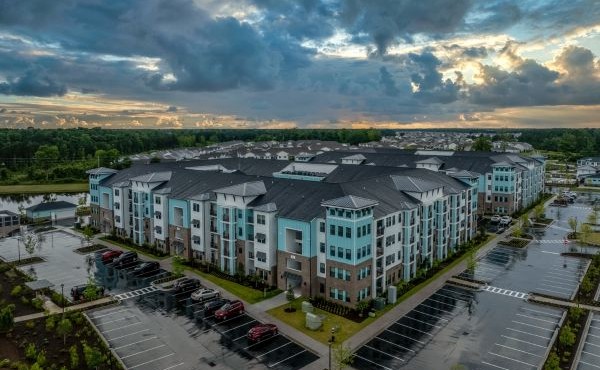The small multifamily real estate sector is showing signs of renewed momentum, according to an analysis by Arbor Realty Trust. However, the outlook remains uncertain due to expectations of tighter monetary policy, which could slow the market’s recovery.
In the second half of 2024, property values in the small multifamily sector began to climb, and loan originations rose by 5%. But by the end of the year, the landscape began to shift. Long-term interest rates increased as 10-year Treasury yields climbed, briefly dipped in early March, and then rose again following the implementation of new tariffs.
These developments prompted a more cautious stance in the market. Cap rates and debt yields increased, while loan-to-value (LTV) ratios declined. Still, the sector remains relatively resilient due to the ongoing demand for affordable housing in the U.S.
Although loan volumes in 2024 didn’t match the peak levels seen in 2022, they came close to pre-pandemic norms. Between 2015 and 2019, average annual originations were around $50.5 billion. In 2024, that figure reached $46.7 billion. Elevated interest rates also reduced the appeal of cash-out refinancing: such loans made up 75.6% of total originations in Q3 2022 but fell to 68.4% by Q4 2024.
In terms of property valuations, there was a 2.1% year-over-year decline in Q4—marking the seventh straight quarter of price drops. However, the pace of these declines has slowed recently. In fact, one quarter showed a slight increase of 0.7%, and prices rose by 1.5% in Q3, signaling potential stabilization.
This aligns with comments from Chad Littell, CoStar’s national director of U.S. capital markets, who recently told GlobeSt.com that the market’s trend can only shift once the rate of decline flattens. It appears that such a turning point might be nearing.
Cap rates for small multifamily properties averaged 6% in Q4, a modest increase of two basis points from the previous quarter, and 40 basis points above the broader multifamily market average of 5.6%. Since early 2023, small multifamily cap rates have risen by 108 basis points.
Meanwhile, the risk premium narrowed by 32 basis points to 168 basis points in Q4, coinciding with average 10-year Treasury yields of 4.3%. Property expense ratios also improved slightly, falling to 41.0%—six basis points lower than the previous quarter and down significantly from the 166 basis-point rise seen the year before.
Occupancy levels continued to improve, rising to 97.5% year-over-year. This suggests that the surge in construction-driven inventory may be getting absorbed, particularly in the small multifamily space.
Source: GlobeSt.

